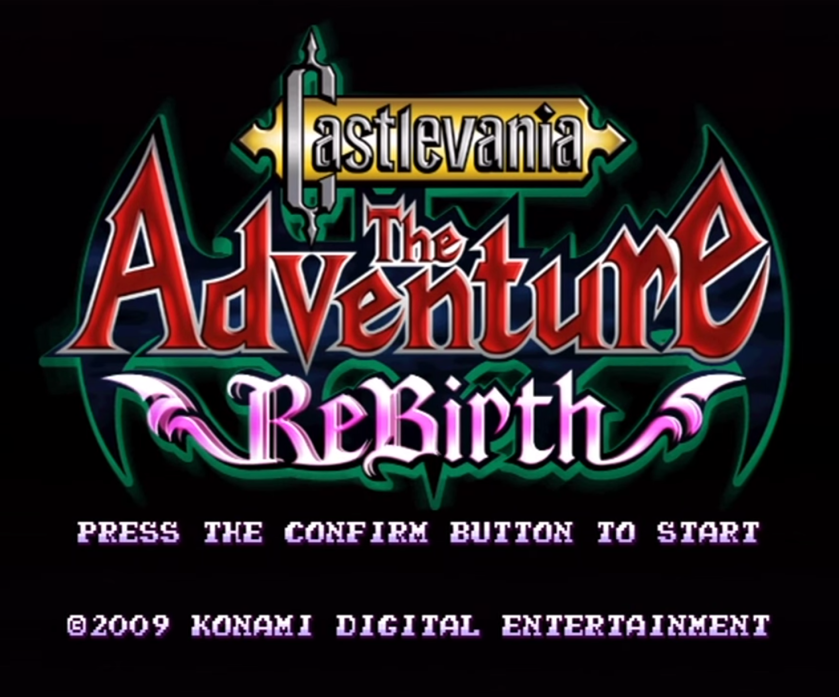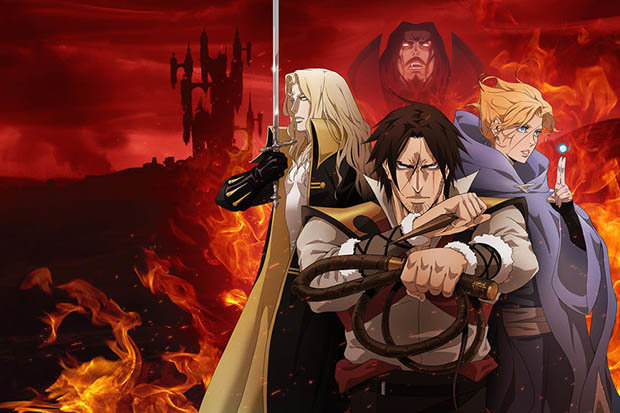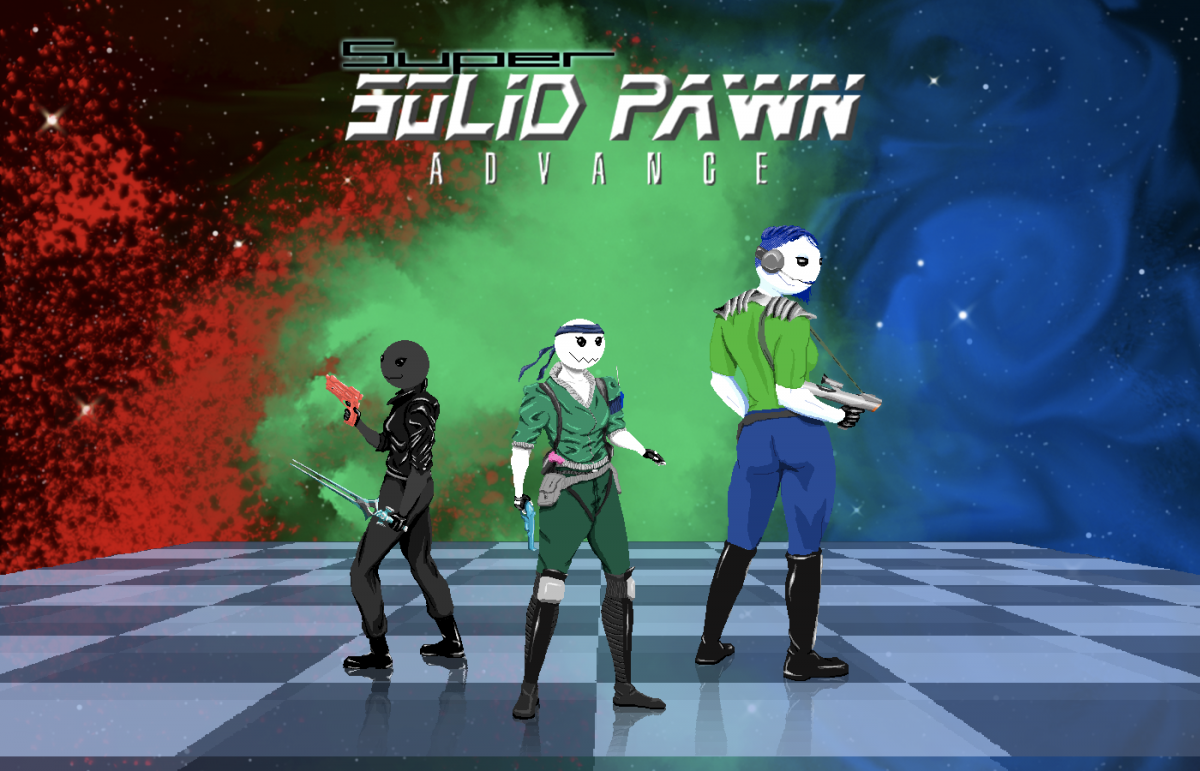Although Konami has taken a turn for the worse in recent years, at least as far as the gaming landscape is concerned, we will always have those old mainstay series to fondly look back on. Excellent hits like the Metal Gear series, with its fun arcadey stealth and bonkers story, Silent Hill with it’s mastery of horror and subtlety before the US studios got their hands on it, and Castlevania, the all out monster mash throwing the demon hordes of the night at you in consistently high quality titles. the only thing it couldn’t survive was the third dimension. Today I’d like to take another look at the forgotten children of the Castlevania series, the Gameboy titles.
Now I know what you may be thinking, “Forgotten? The Castlevania GBA and DS titles are cult classics unto themselves, beloved by Metroid-Vania fans.”, and you would be quite right. Koji Igarashi’s Castlevania titles are legend. So good that when he went to business for himself to make a new game without Konami, fans flocked to fund Bloodstained: Ritual of the Night. But those titles will be saved for another time. Right now, I’m here to look at the early forays into handheld vampire hunting, the Castlevania titles for the original GameBoy.
Game, the First
Castlevania: The Adventure

Many NES games saw sister titles on the GameBoy. Konami brought several of their games over with lesser or greater alterations. In other cases they made original entries in some of their main series with new mechanics tailored to the GameBoy experience. Nemesis is a straight forward trimmed down copy of the first Gradius, while Operation C is an original title in the Contra series with new levels and graphics.
Castlevania: The Adventure is in the latter group. Rather than just a truncated Castlevania 1, it has its own design and gameplay mechanics. You take on the role of Christopher Belmont one hundred years after Trevor Belmont defeated Count Dracula and one hundred before Simon Belmont’s battles with the Count. The stars have aligned once again, and the Count has been resurrected to renew his reign of terror. Christopher is called upon to follow in his ancestor’s footsteps and free the land from evil. Taking the Vampire Killer whip in hand, he makes his way to the demon castle.

The story is a bit of a non entity, like the original game. Errors on the box and the ambiguous story in the manual make it seem as though you’re playing as Simon Belmont from the first two main games, however the next GameBoy title, Belmont’s Revenge, makes it clear that The Adventure follows Christopher.

In many ways, this game mirrors the original. It is a side-scrolling platformer, your main weapon is a whip, and the gameplay feels the same. It doesn’t take long though for the differences to arise. To start with you do not have sub-weapons. Series mainstays like the axe, holy water, dagger, and cross are absent. All you have is your whip. It can be upgraded like in the original, but when you take a hit you lose the upgrades. To make up for the lack of projectile sub weapons, the second whip upgrade allows it to shoot fire. This is pretty handy, especially against the bosses, but it is lost very easily if you’re not careful.
Another small but interesting tweak to the series formula is how to recover health. In the past, you would have to wait till the end of a stage to heal, or hope against hope that a secret wall would be hiding a pork roast for a boost. The ever present hearts were ammo for your sub weapons rather than healing items. But The Adventure throws a curveball and now, hearts heal you. They are hard to come across, but it’s a change that would take most Castlevania fans by surprise.

Getting used to the combat is made more difficult than it really should be because of the controls. The most glaring issue is your speed. The Belmonts have never been the nimblest of fighters, but this is hard to believe. You move like you’re hip deep in mud. When multiple enemies are on screen the game chugs hard. This really takes time to get accustomed to. When you jump you can’t change your trajectory, and the slow speed makes the distance hard to judge. You also fall like a ton of bricks so sudden drops take you by surprise, and the platforming is insanely finicky.

Something long time castlevania players are familiar with is the horror of getting stuck climbing a staircase when flying enemies come about. This time around, the stairs have been banished to another dimension and replaced with ropes. Climbing ropes is just as slow as walking, and jumping off of them is just as perilous as regular jumping, but now with the added challenge of not being able to attack.
The presentation is okay. It’s certainly not peak GameBoy, but it is a decent miniature Castlevania. There’s a variety of monsters and the bosses are memorable, however the environments are rather bland. The game’s soundtrack is one of the high points. Composed by Shigeru Fukutake, Norio Hanzawa, and Hidehiro Funauchi, the music is very true to the grand style of the other games in the series. It is also the first to have a stereo soundtrack thanks to the GameBoy speaker, adding to the experience of the game nicely.
The game is not very long, just three levels and a last battle with Dracula, but they are a real challenge. Granted, most of that challenge is wrestling with the awkward slow controls. For casual fans, I doubt this title will light a fire in your heart. It’s a pain to play and the length come from poor design rather than excellent challenge. However, it is one of those games that saw wide sales, so it is easy to get your hands on for cheap.

In 2009, Konami released Castlevania: The Adventure Rebirth on Nintendo Wii. This was part of a small line of Rebirth titles, and was a remake of the gameboy original. Unfortunately, Nintendo has retired the WiiWare library. As of March 2018, you can no longer purchase titles on the Wii marketplace, and they have yet to announce plans to bring these lost games to the Switch or 3DS.

The Adventure Rebirth is an excellent remake. The bare-bones of the gameboy original have been completely reworked into a classic Castlevania experience, with more enemies and levels. Gameplay is back to the series standard. You still have the whip of course, and the sub weapons have been restored in full. As a nod to the gameboy version, occasionally you’ll find a magic orb that grants you the ability to shoot flames from your whip for a limited time.
The presentation is fantastic. The graphics are colorful and varied, level design is true to castlevania form with good enemy placement and pacing, and the bosses are impressive even if they are a little simplistic. The music was handled by Manabu Namiki, relying more on remixes of the series greatest hits, and the sound is very reminiscent of Castlevania Bloodlines. On the whole this was an impressive remake and it is a real shame that, as of writing, the ReBirth series is no longer available.
Game, the Second
Castlevania II: Belmont’s Revenge

The Adventure was met with pretty lukewarm reception. Gamers were frustrated by the lack of levels and the awkward controls. It did have its supporters, but for the most part, fans felt the game was a bland entry in the series. With these criticisms in mind, Konami set out to address these problems with the next GameBoy title.
Belmont’s Revenge takes place fifteen years after The Adventure. At the end of his confrontation with Christopher Belmont, Count Dracula barely escaped with his life by dissolving into mist. Since then he has bided his time for the right moment to strike back. After the battle, Christopher returned to the Transylvanian countryside awaiting the Count’s inevitable return. He found love, married a young woman, made a home, and had a son, Soleiyu. As the boy grows, Christopher trains him in the ways of the Belmonts. At Soleiyu’s coming of age feast, a dark cloud descends on the gathered revelers. Dracula’s possesses Soleiyu, turning him into a demon and using him to complete a ritual to restore the Count to his full power. Enraged by this travesty, Christopher chases after the army of darkness to wipe them out once and for all, to save his son and the world.

Right off the bat, this game distinguishes itself from most other entries with its level structure. Rather than a series of linear levels strung together one after another, you can pick four levels in any order. Each stage has unique obstacles and design, such as swamp land that slows you down in the plant castle, or crumbling platforms from the crystal castle.

Gameplay wise, Belmont’s Revenge is a complete 180 from The Adventure. There is no slowdown, and falling is slower, giving you more control over your jumps, you move faster, and you can attack while climbing the ropes. Two of the traditional sub weapons make an appearance, the holy water and the axe. Even with these, the game keeps the whip upgrades from The Adventure, including the fireball whip, and the only way you’ll lose the power ups is if you die, or are hit by a specific enemy. You go back to healing with the hidden pork roast and hearts are back to weapon ammo.

Presentation is strong with this one. Each level is distinctive and memorable. Detailed levels with nifty animation. The bosses are challenging, but fun, and keep you on your toes. The music was composed by Hidehiro Funauchi again, and like before it’s one of the stronger points of the game. It’s very in line with the series and creates that great faux-Gothic style the series is known for.
Game, the Third
Castlevania Legends

1997 was a big year for Castlevania as it saw the release of what many think of as the best entry in the series, Symphony of the Night. This is a game of insanely high quality from the impressive number of detailed environments and enemies, to the far more open and free form combat controls, and especially the size and scope of the game, featuring a massive explorable castle that could be doubled in size if the correct conditions were met.

Sony fans everywhere, and some Sega fans in japan, were treated to one of the best 2D platformers of the decade, while Nintendo fans were still awaiting the much more hotly anticipated Castlevania 3D, which was still in production for the N64. This title wouldn’t emerge for another two years so, to tide the fans over, one more GameBoy exclusive title was made.

Set well before the events of Castlevania III, Castlevania Legends was intended to be an origin story for the series. After the death of his love Lisa, Count Dracula gives himself over completely to the powers of darkness to seek revenge against mankind. This plan for wholesale murder and destruction drives his son, Alucard, away from him, leaving the young vampire to wander the countryside. During his travels he discovers a young girl, Sonia Belmont, who possesses an unusual holy power. He befriends Sonia and helps to hone her skills and train her in combat to fight the evil to come. Time passes, and Dracula’s campaign of death begins. Alucard leaves to take up arms against him, but Sonia, unwilling to stand by while her people are terrorized, journeys to defeat the Prince of Darkness herself.

Some of these details are not explicitly stated in the manual or in game, but they can be inferred. Meeting Alucard in the game, he mentions the death of his mother as Dracula’s motive. His conversations with Sonia imply a long standing friendship, and the manual is equally ambiguous about the nature of Sonya’s power. Unfortunately, speculations on the plot of Castlevania Legends are rendered a moot point, as this was the first title to be scrubbed from the series continuity. It conflicts heavily with the events of later titles like the PlayStation 2 game Lament of Innocence, which posits a completely different origin story for the Belmonts and Dracula.

In an amusing twist however, this game too has been undone thanks to the recent Castlevania Netflix series, which seems to use Castlevania III and Symphony of the Night as the basis of its story, solidifying Lisa’s death as the canon explanation for Dracula’s wrath, and Trevor Belmont being the first to stand against him.

Legends is structured similarly to The Adventure, going back to a linear level progression, and keeping the whip upgrade system, though you’re upgrades endure beyond getting hit, like in the main series. At the start of the game you can select your difficulty. Standard is the basic game while Light mode reduces the number of enemies in the game.

The usual sub weapons are unavailable in this game, instead they appear as hidden items that you can find to access an extended secret ending. As you play the game you unlock special abilities after each level that take the place of the sub weapons. These powers lend a decent amount of variety and can make collecting hearts all the more important. There is an ability to stop enemies, one to launch a powerful blast, another to hit all enemies, and one to fully recover your health bar. Light mode gives you all the powers right away.
In addition to these abilities, Sonia can tap into her inner strength to enter a super powered states called “Burning Mode”. In this mode she moves faster, hits harder, and is invincible as long as the burning meter lasts. However you can only use this power once per life. It’s a very handy tool for getting out of a bind and it well almost certainly take care of any boss in the game.

Sonia is about as fast as Christopher was last time, but she can also move while crouching, allowing her to fit into crevasses at attack tough enemies from a safe vantage point. Just like before she can attack while climbing a rope, and has the ability to swiftly slide down ropes to avoid enemies and speed things up. All of these are much appreciated moves that would have been great to see in a mainline console title. Simon could crouch and move in IV, but no Belmont has been able to slide down banisters.

The presentation is quite nice. There is some very nice art throughout, and everything in the game is clear enough to distinguish. If you have a Super GameBoy for your SNES, then you can pop this game in for some preset colors for the levels and interface. The music by Kaoru Okada and Youichi Iwata has its good points and its bland ones. Some tracks are very nice remixes on classic Castlevania tracks while others are just kind of uninspired. Generally speaking though the music and sound design are okay.
Conclusion:
The beginning of this journey started out rough with the unforgiving challenge of The Adventure, turned into a more rewarding, experimental experience with Belmont’s Revenge, and ended on a unique but quintessentially classic Castlevania note with Legends. Although none of them really reached the sheer level of quality found in the main line console games, a concession common to GameBoy titles, they still managed to make something special out of the little they had to work with…
…except The Adventure… they kind of fumbled that one.
The future of the series on handheld systems was undoubtedly bright, but the early games are certainly worth a retro gamer’s time. Of these three titles, I think that Belmont’s Revenge is the best. The game has the most engaging level design and gameplay, and has stellar presentation. Legends is a close second while The Adventure is a far off third. While most GameBoy titles tend to be simplified versions of or tie ins to their home console cousins. This is most certainly the case with The Adventure, but both Belmont’s Revenge and Legends manage to stand out as quality entries in the Castlevania series.






Nice review!
LikeLike
Thanks!
LikeLike